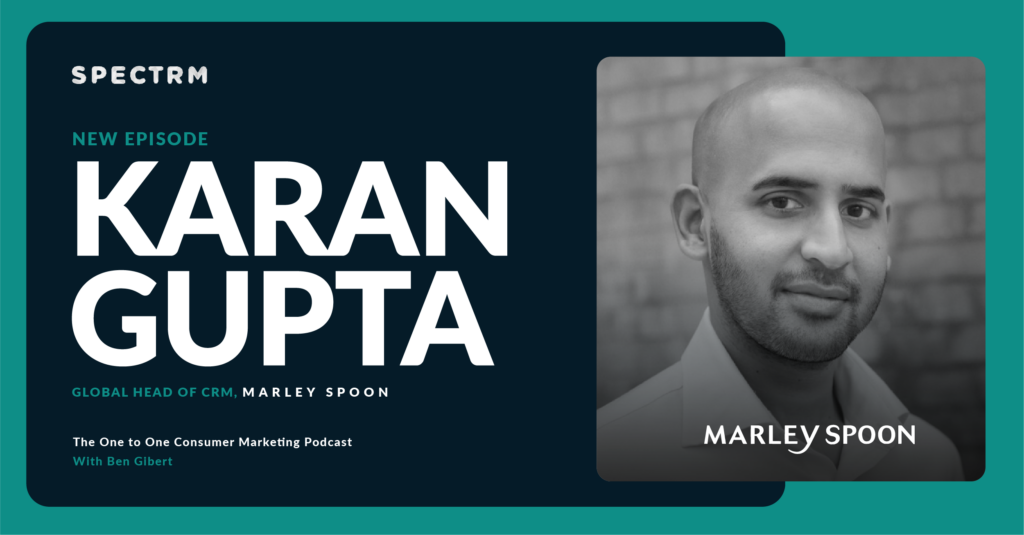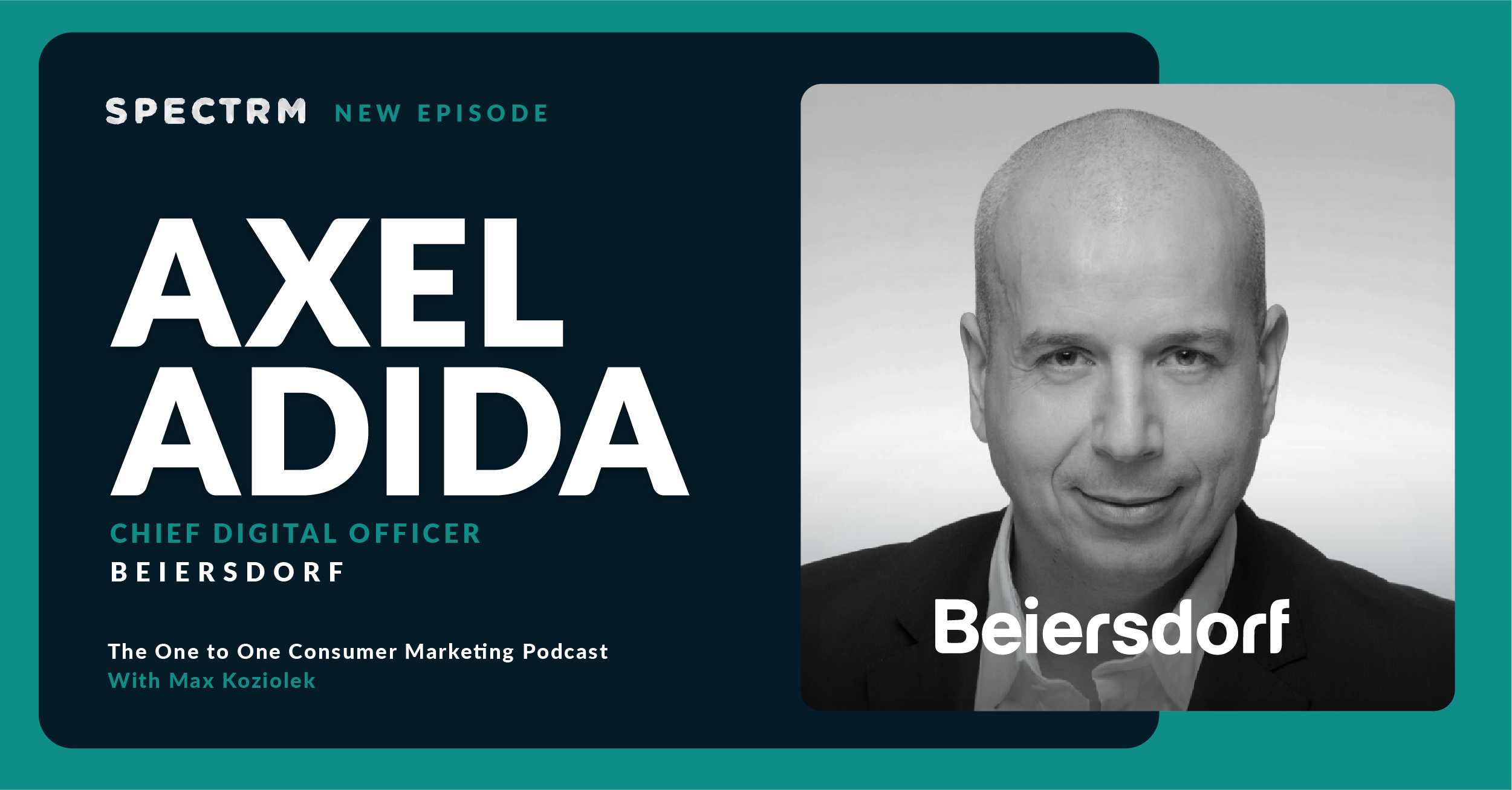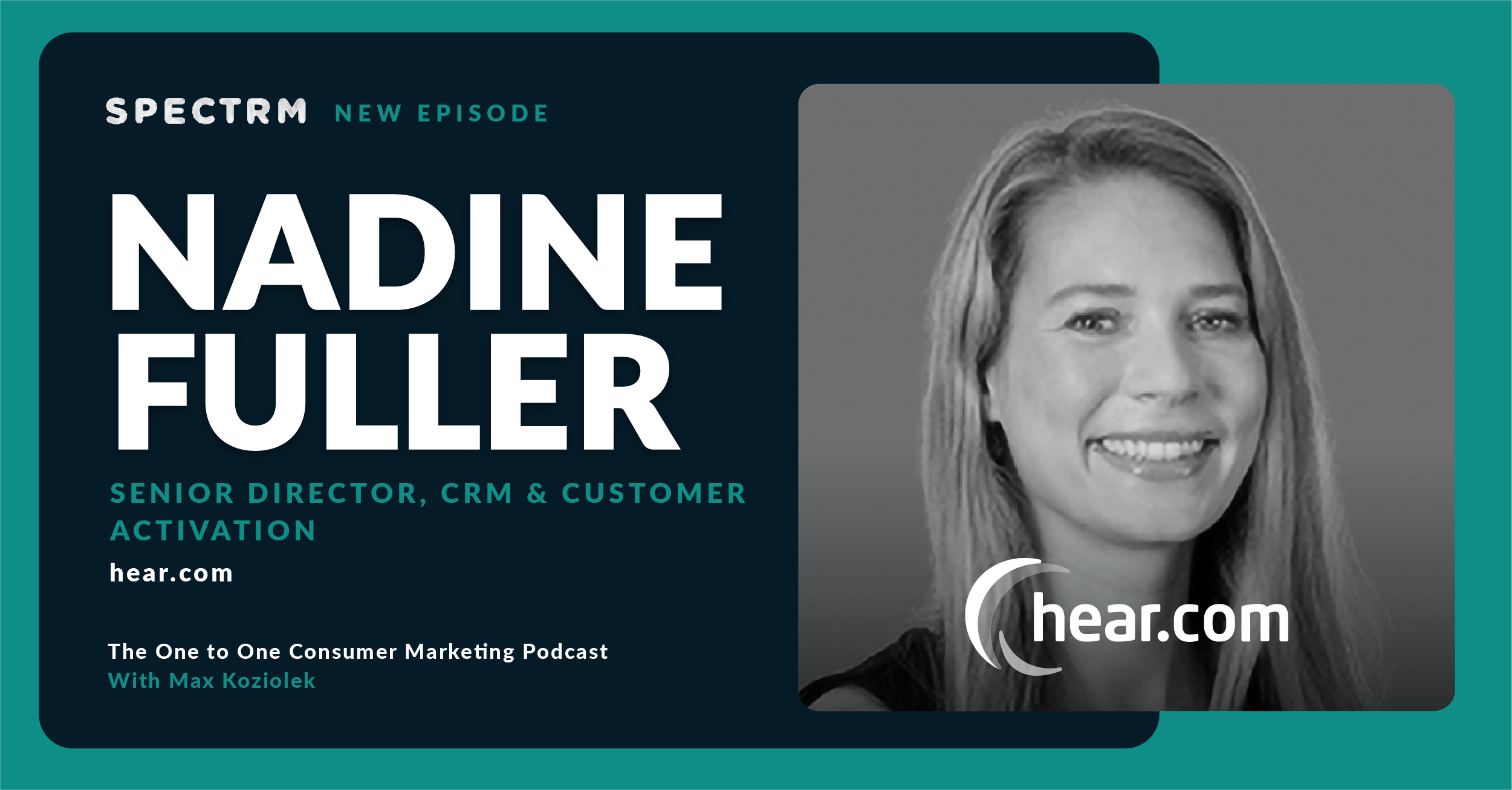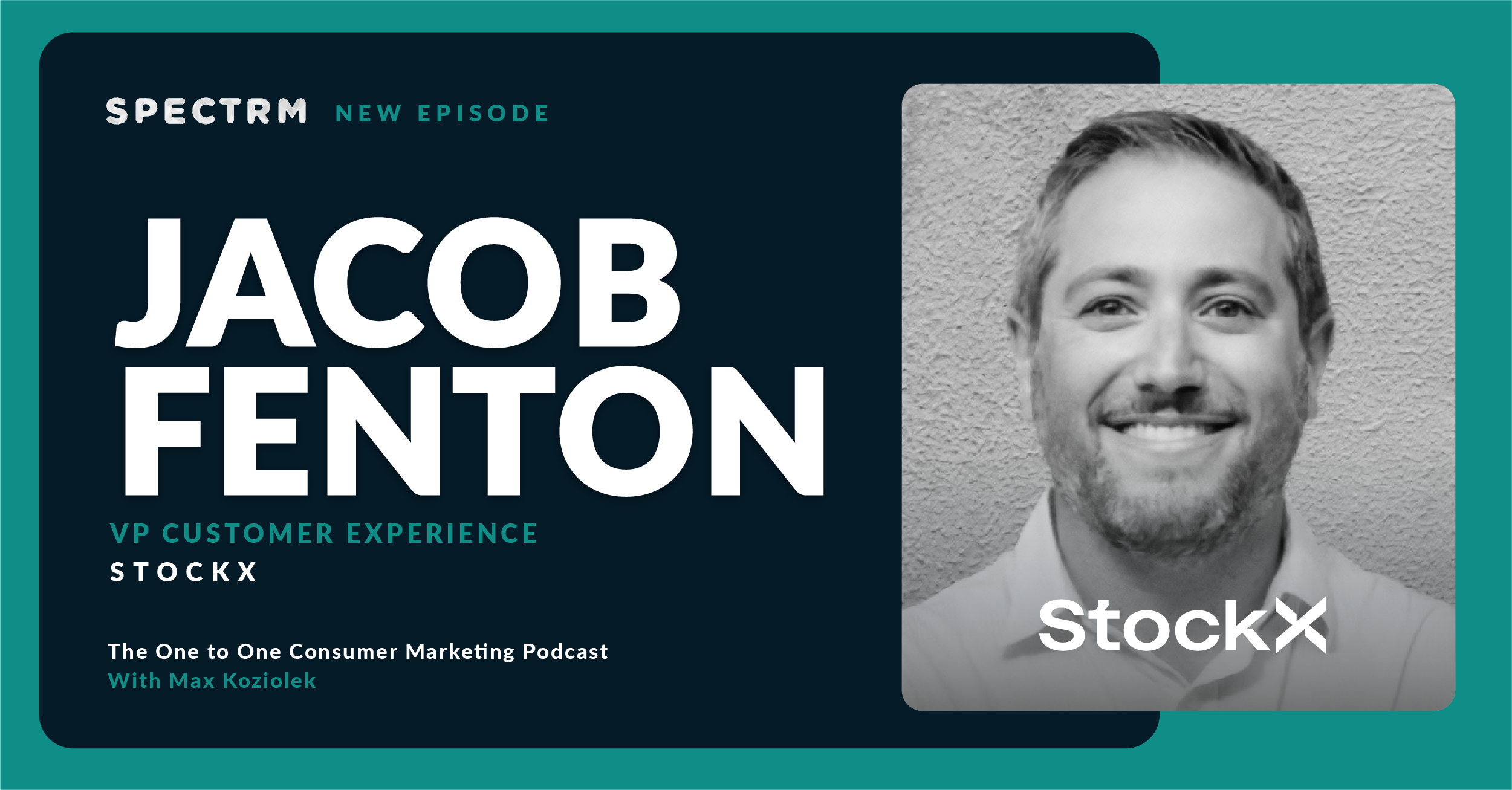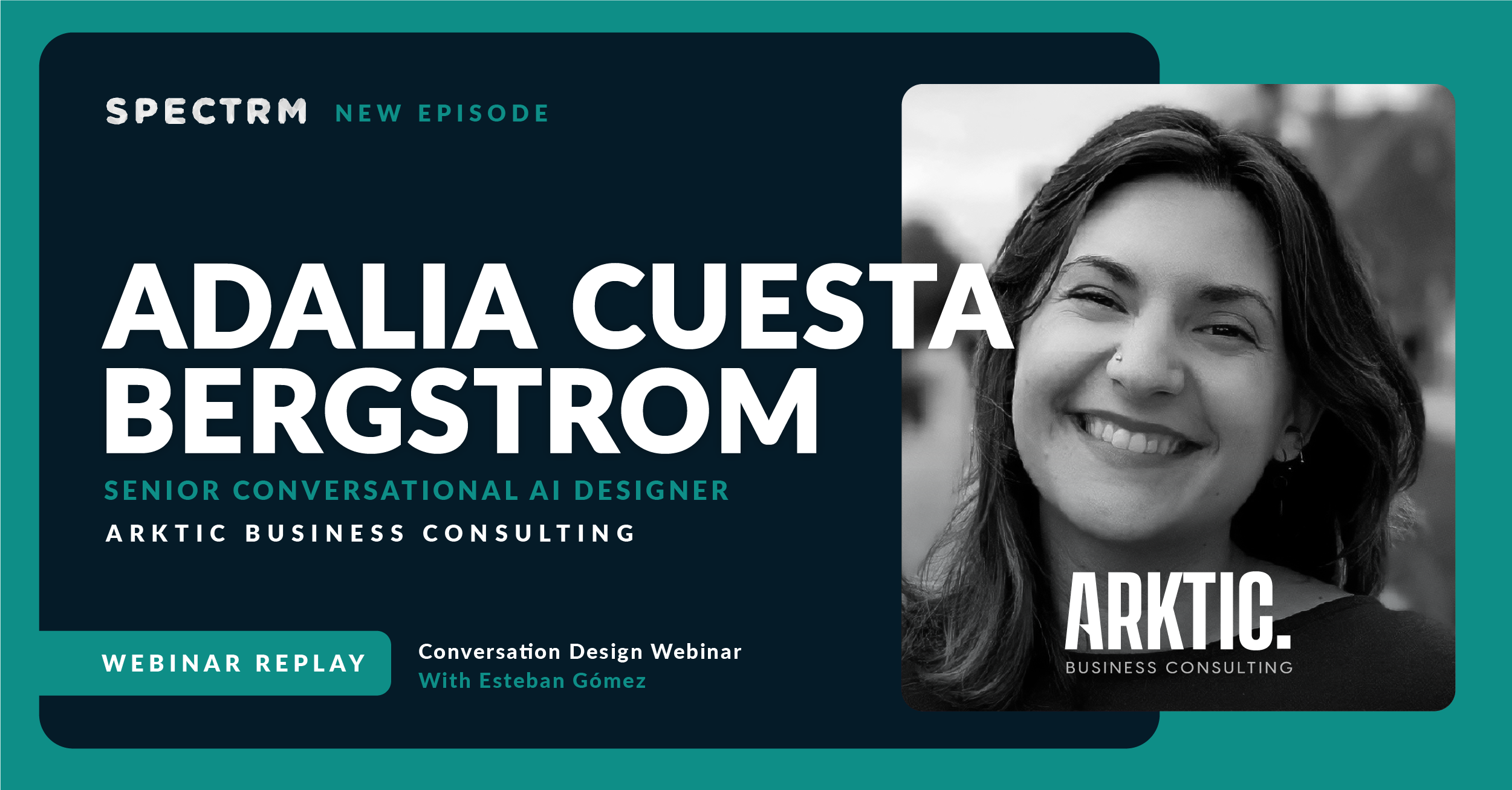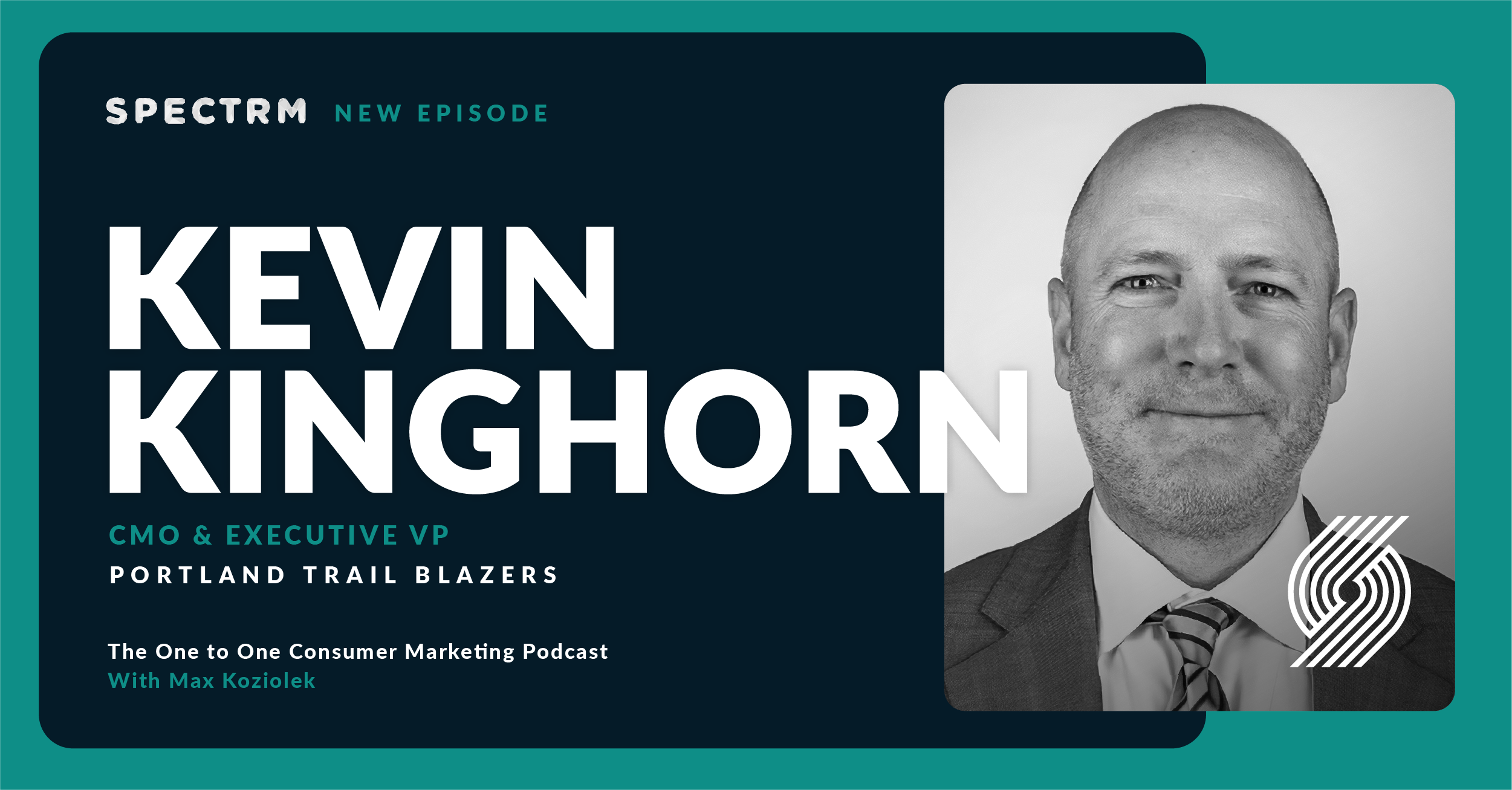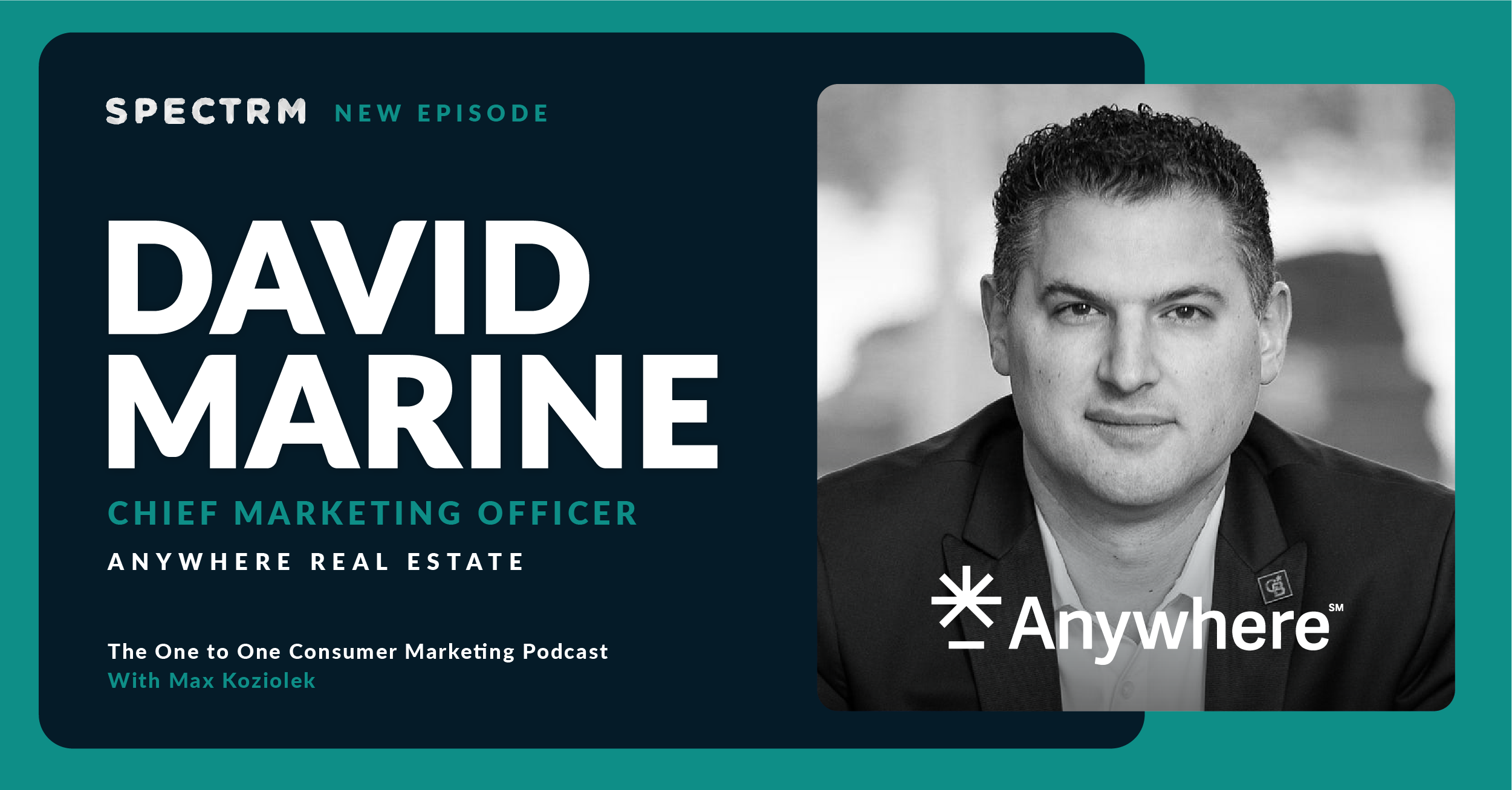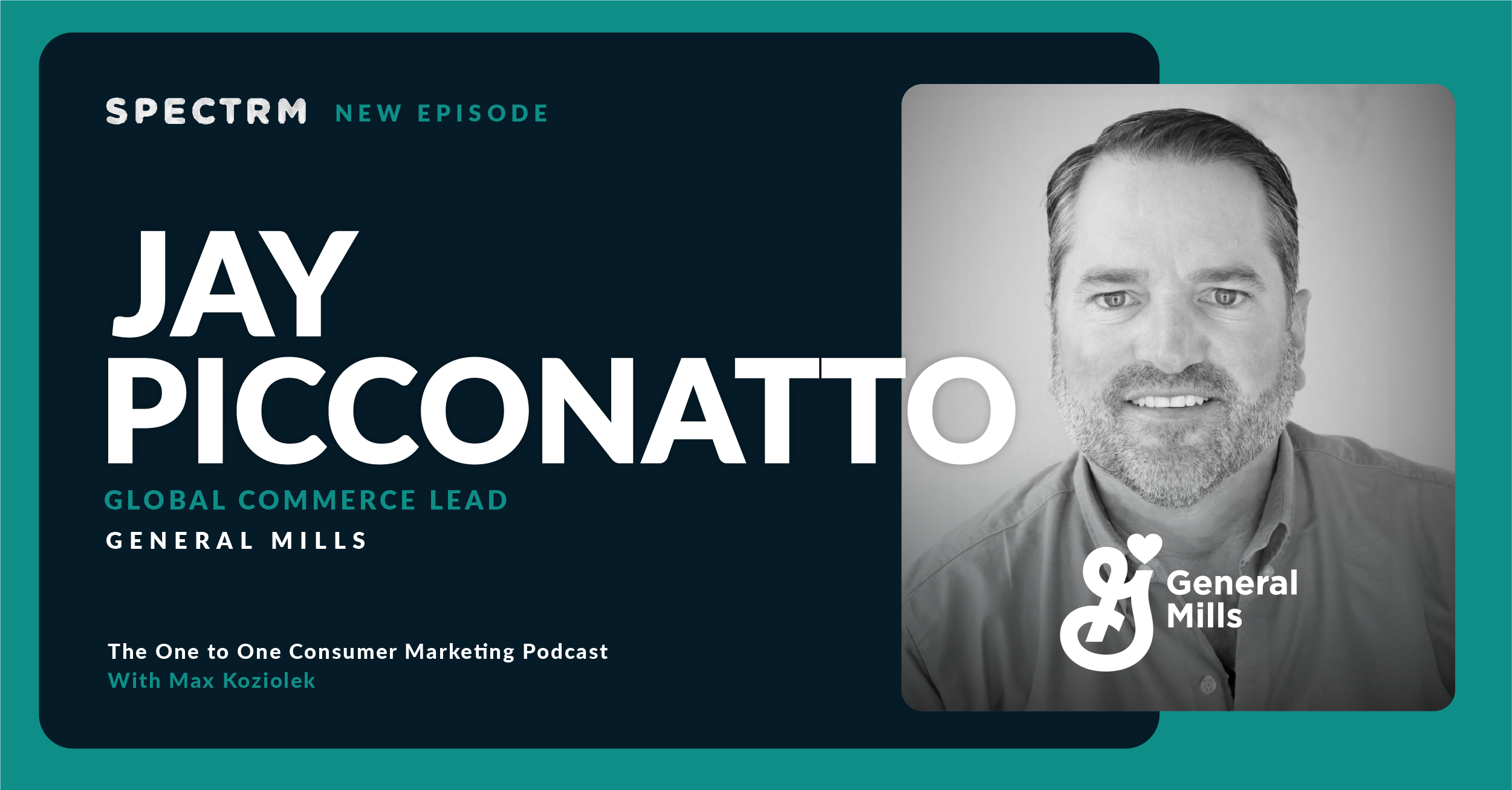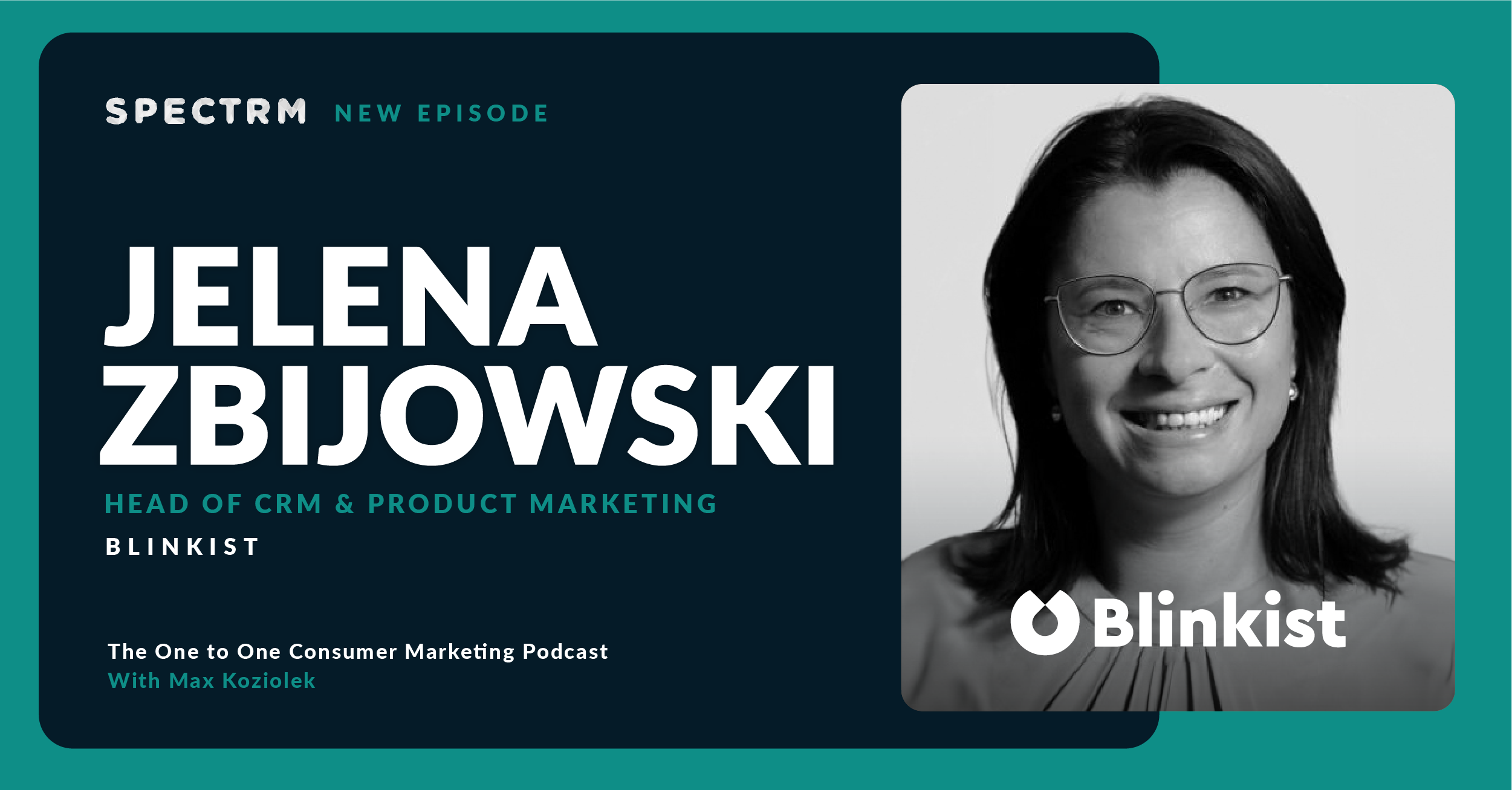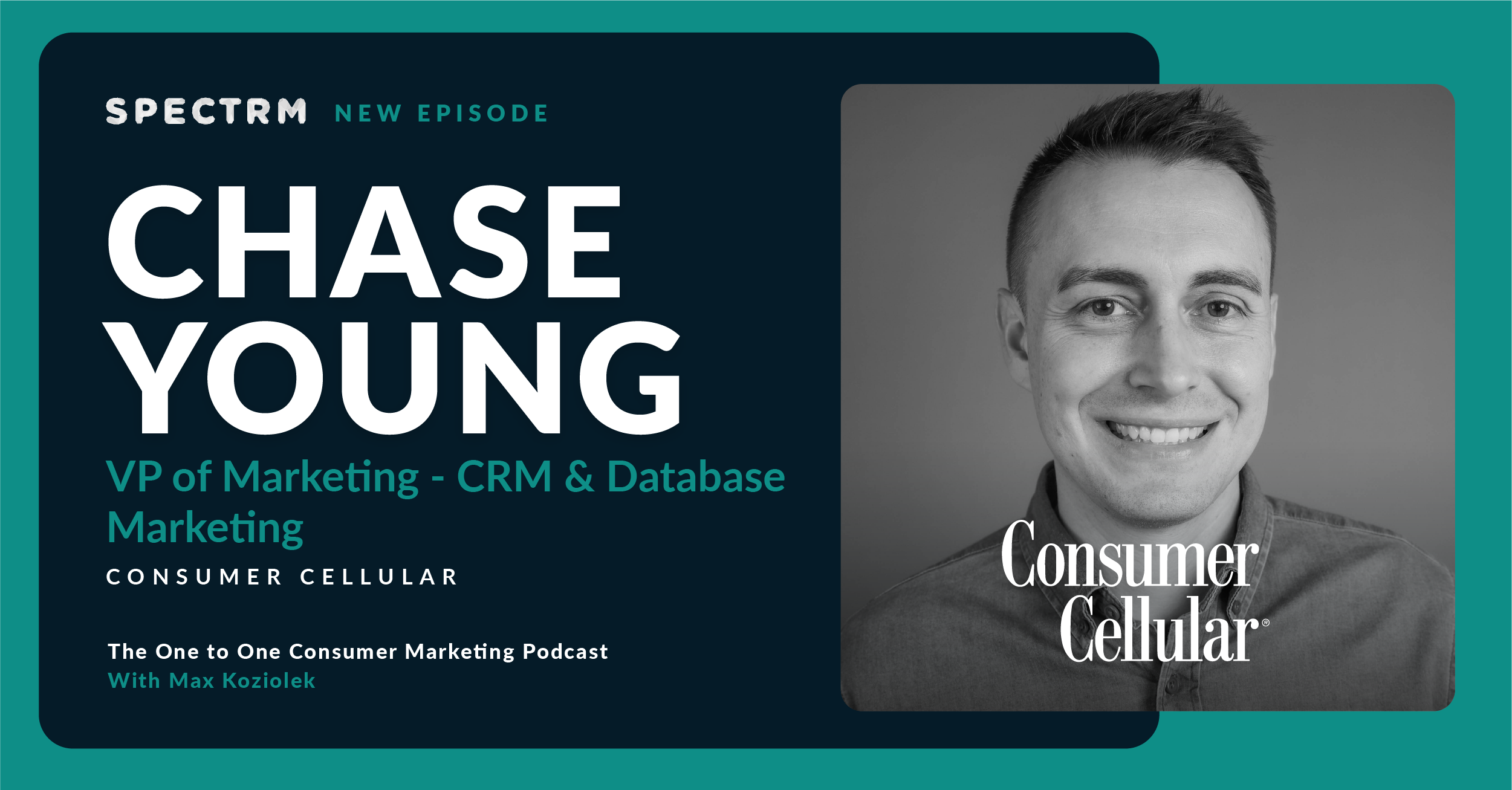Summary
On this episode of One-to-One Conversational Marketing, Ben speaks with Karan Gupta, Global Head of CRM at Marley Spoon. Together they talk about how to effectively move customers along their journey and retain them using relevant and timely channels, as well as how to build a CRM approach thoughtfully and holistically that will scale.
Topics discussed
- How CRM is a natural extension of growth, and how marketers can build an engine that retains customers at scale.
- Why CRM revolves around understanding the most suitable channels for their audience, and having the most relevant timing, personalization, and content all in one.
- The three pillars around which Marley Spoon develops the customer journey, what approaches and platforms they use to stitch that customer journey together, and how they structure their team to focus on different parts of the customer journey.
- Why email is still a relevant and viable channel for them, but why marketers also need a mix of channels through which to engage with and retain customers.
- The challenges to CRM, including managing its complexities around multiple automations, sending too much information, and ensuring channels are talking to one another.
- Advice for marketers around how to approach their career, and why being a generalist can help you adapt to changing marketing landscapes.
- What technology is helping manage and enhance the customer journey today, and where the future of consumer marketing is headed.
Having a T-shaped mindset can actually be a growth mindset. I believe this mindset is going to be very critical for people, especially those looking to enter consumer marketing.
Guest biography

Senior Growth Strategist, Marketing Tech, and Data-driven Retention Leader. 13+ years of diverse experience across fast-paced, hyper-growth tech startups and entrepreneurial ventures across 3 continents, spanning multiple geographies (USA, UK, India, Singapore, Hong Kong, Chile, Berlin)
Global MBA (US) + MSc Digital Marketing (UK) + Electronics Engineer (India)
Self-published author on Amazon – ‘How to give pain a dose of its own medicine’
Company overview
Marley Spoon makes it easy to cook a delicious meal at home by sending tasty recipes and fresh ingredients directly to your door. With Marley Spoon, you’re in control—you decide what to eat, when to eat, and with how many. Leave behind the hassle of grocery shopping, say goodbye to food waste, and fall in love with cooking all over again!
Industry: food & beverage services | www.marleyspoon.com
Subscribe to the podcast newsletter
Transcript
00:00
Ben Gibert
Unification, orchestration, and personalization are the three core pillars of Karan Gupta’s strategy when it comes to CRM and retention at Marley Spoon. This is a great episode where we dug into how he’s thinking about retention, the infrastructure that he’s building in order to unify customer data, orchestrate the customer journey, and then really execute one to one personalization. Also, the team that supports this, how he thinks about that, what his vision is for CRM in the next few years. A lot of great stuff in this from someone who’s executing a big program across a lot of channels at scale. Enjoy and looking forward to hearing your thoughts.
Hey, everyone, and thanks for watching and listening to The One to One Consumer Marketing Podcast. Today, I’m speaking to Karan Gupta. He’s global head of CRM at Marley Spoon, Martha Stewart’s meal delivery service. Karan, thanks for chatting with me today.
00:57
Karan Gupta
Thanks for having me, Ben. Also for all the listeners and viewers, I have a bad cold, so hopefully still listen to more properly. Yeah, absolutely.
01:07
Ben Gibert
I mean, it is flu season. I was just saying we have quite a few people on our team that are out with the flu these days as well. I appreciate you joining the podcast, even despite the flu. So, yeah, I’m looking forward to our chat. Before we get started, can you give us a little background on yourself and how you ended up in your current role as global head of CRM at Marley Spoon?
01:29
Karan Gupta
Yeah, although I think that can probably take the entire length of the podcast. By background, I’m an engineer, grew up in India, and always knew that is something I absolutely did not enjoy, which took me to this journey of, I think, figuring out myself. Went to business school in the US. Did another master’s in digital marketing in the UK. Over the last, I would say, decade, have been leading growth teams around the world and fell into CRM, which I find a natural extension of growth in any case, currently based out of Berlin. And, yeah, that’s me in a nutshell.
02:05
Ben Gibert
Nice. CRM being a natural extension of growth. Can you talk through that a tiny bit? Why do you believe that?
02:13
Karan Gupta
I think historically and I think I was also one of those individuals that back in the day, when anyone would think of CRM, they would naturally just think of email marketing and also email marketing from a perspective of sending the same newsletter to people left, right, and center, and that is CRM for you. Now I think when people talk about CRM and there are a lot of buzzwords in this customer engagement, retention, and as let’s say, consumers of different products, we all know retention is hard, right? There’s so much different customer behavior. Customer journeys are not linear. It’s, of course, putting the same hat of a growth market here thinking that how can you build this, let’s say, engine of retaining customers at scale? So it is a growth function. How you do that is complex because it’s looking at every customer differently and then thinking of how to retain them and how to engage them at scale.
03:08
Ben Gibert
Yeah, I think that’s exactly how we’re seeing this space as well. It traditionally has been seen as technical marketing, kind of a different beast, and especially, I think, with the growth of a much more complex buyer journey across so many channels, touch points that a CRM marketer ahead of retention has to deal with. It’s a very different landscape now than it was even ten years ago when it was all about email. I think that touches kind of on the next question. Like, how would you summarize the current state of our marketing today?
03:43
Karan Gupta
Of course, at the heart of it, email is still an important channel and from a lot of perspectives, right? One, of course, it’s a free channel, so a lot of, let’s say, organizations would abuse that in that sense, that just sending that email is an incredibly strong touch point. How it’s evolving? Of course, if you look at the whole heart and soul of CRM, it’s about understanding the most relevant channel, having the most relevant, let’s say, timing, personalization and content all infused into one. It’s evolving into this, let’s say, ecosystem where organizations are trying to figure out which channels to unlock, how to activate that data so they start understanding that piece around which channel to unlock, at what stage in the customer journey. Having that, let’s say, architecture in place where you can basically move towards, let’s say, a one to one personalized interaction with customers through a channel, through a touch point at a time where they’re most likely to engage, is a direction where a lot of organization would try and move towards.
04:46
Karan Gupta
Of course it’s hard, but that’s the direction, for sure.
04:50
Ben Gibert
Yeah, I think that’s definitely the dream, is a one to one journey for every customer that is hyper relevant and at the right time and place. Can you walk me through how you manage that? Like you mentioned, activating data on the most relevant channel at the right time. How are you doing that at Marley Spoon or kind of what is your philosophy when it comes to mapping out that journey and then actually engaging customers?
05:15
Karan Gupta
Yeah, I think so. Maybe a bit of context for people not aware of, let’s say, Marley Spoon. We operate in this, let’s say, ecosystem or vertical of meal kits. It’s all about, let’s say, food boxes and recipes, and then we enable people to cook as per their, let’s say, flexibility and preferences. What many people don’t know is that Marley Spoon has a wide range of products and brands which also makes the customer journey, let’s say, complex. Because, let’s say, if you are a customer, you might engage with our flagship brand, which is Marley Spoon. Let’s say you churn from the brand because let’s say it’s expensive, we can cross sell to you another brand which is the budget friendly version. Now imagine in this scenario we have to engage with our customers at scale. I would put it into three, let’s say, simple pillars on looking at this customer journey.
06:06
Karan Gupta
The first part is how do we stitch that customer journey together in that, in our case, we use a customer data platform called mParticle for identity resolution. Simply what it does, it stitches that customer journey across different websites, different apps, different, let’s say, brands, so that we have a unified way of looking at a customer. We know that in this case, let’s say it’s Ben. He is an active customer of one brand, has never heard of the second brand, is a churned customer of the third brand, for example. We can stitch that customer journey and ensure that our systems are able to identify Ben in a unified way. That’s the first pillar of unifying that customer journey. The second, and let’s say the heart of customer engagement is of course a CRM system. In our case, since we deploy multiple channels across customers ranging from emails, push notifications in app, SMS, WhatsApp, to even offline channels like direct mail.
07:06
Karan Gupta
How do we engage with a customer like Ben across these different channels and also in a context where Ben, let’s say, might not have the app, he might be unsubscribed from certain emails. How do we bring in all this context around these different engagement touch points in reaching out to Ben? That’s the second pillar on orchestration of different touch points. The final piece is, of course, the personalization engine, right? Like Ben is unique. He might, let’s say, be traveling when he’s traveling, that’s when he, let’s say, engages with his emails, he might just have a limited attention span. I’m not throwing Ben under the bus for saying that we all activate all of this behavioral data about Ben into personalizing communication to that. This could be done with a wide range of personalization tools that we deploy. That’s the third piece in building personalization logic and activating smarter audiences towards, let’s say, building this logic.
08:09
Karan Gupta
These three pillars is how we end up moving towards this one to one personalized communication with our customers.
08:16
Ben Gibert
I love that the simplicity of the three pillars in terms of kind of unification of identity and data, the orchestration of that whole journey, and then the personalization and obviously the different tools that underpin that, like the technical foundation for different work there, I think is a very good way of looking at it. I have two questions based on that. One is just to understand what does your team structure look like to kind of execute on all of that vision. You mentioned a few different channels, notably email versus SMS versus WhatsApp and kind of the decisions around when you use what. Can you talk through about that and what you see performing these days?
08:56
Karan Gupta
Sure, let’s start with the first one. Right, so the team structure, and I think again, that is as important as the text tag that enables something like this. Because as you would imagine that to execute something like this, you need different skills within the team. How we try to also build a team is more from a competency standpoint. How we divide the team, for example, is both vertically and horizontally. Marley Spoon is, let’s say, a subscription, a weekly subscription. The first, let’s say, alignment we do is a vertical focus. We divide the stay team into different stages of the customer journey. The first stage focuses on lead activation. Anytime a person, let’s say, leaves their contact information, how do we basically get them to use the product for the first time? The second part, let’s say, of the customer journey is the active stage. How do we, for this active customer who has already experienced the product, how do we retain them, how do we upsell, how do we cross sell, how do we increase basket size, reduce churn and so on.
10:00
Karan Gupta
This part focuses more on the active stage. The third stage, of course, being a subscription business, naturally you would have customers who stop using the product for a variety of reasons. This stage then focuses on reactivation and win back and of course, to active customers. One of our core growth levers is also refill. How do we use refills as a core acquisition layer? I would say it’s bundled together with the active stage. These are the three stages of our customer journey. We have a team lead, we have different CRM managers reporting into each of these verticals. What we also started realizing in this process is that, of course, while it’s important to have a vertical focus, but CRM being a competency center, you need more skills to, let’s say, glue the team together. Now we have a CRM tech lead, which basically supports the entire team as a horizontal focus to enable the infrastructure that I was referring to earlier.
10:59
Karan Gupta
All the three pillars, how do we make sure that we are activating all those technical topics easily across our infrastructure? We have a data lead, and the responsibility of that data lead, again, is to make sure that we are of course, one as a governance layer, because we spend a lot in terms of, let’s say, vouchers or incentives, as well as media deployment. How do we make sure that we are growing profitably? Acting as governance layer as well as being the champion of experimentation. That’s how typically we look at the team structure and enabling the team with different skills to balance that competency in a way. That’s the first part on the team structure. To your second question on the channel mix, the simple answer I would say is it depends. Again, as you would imagine, right, like there are people who engage with different channels differently.
11:53
Karan Gupta
Of course how we also look at our channel mix is in a couple of ways. So, of course, as the first touch point, and I again would reemphasize, email is still a very important channel. We do see quite a significant conversion rate and how we then use our other channel mix is as amplification. In a simple scenario, for example, that let’s say Ben is not engaging with emails, we would then try to amplify that conversion with our channel mix of, let’s say if Ben has an app, send him a push notification. If his push notifications are not enabled, maybe try to send a WhatsApp. If Ben does not use WhatsApp? Then maybe send an SMS. This is how we would basically build different audiences while ensuring that we are of course frequency capping our channels, but using that logic of engagement to then deploy different channels to amplify our conversion from different audiences.
12:52
Ben Gibert
Nice. Yeah, thank you for that. Over your ground. Very helpful. I think seeing how you structure your team by kind of core competency, first it seems like vertical was a starting point, but then really focusing on competency. Seeing how you’ve also realized that there are obviously core technical functions that exist across all of those things and kind of enabling your team leads and CRM managers with people that sit almost in supporting roles or on top of all of those things is very interesting because I think the team structure tells a lot about how people are tackling a problem and where their focus lies in terms of the channel mix as well. Email is still definitely king, it sounds like. Almost the logic of engagement then is more you see channels coming after that to engage customers that aren’t active on email. Would it be fair to say for you that you still reserve email as kind of the highest intent, most engaged audience and you’re aiming for that, but then the other ones are kind of your backup channels where you’re just trying that you said to amplify what’s going on the email side.
13:55
Ben Gibert
Do you so you still see the strongest performance from email versus any other channel just by the nature of which you organize that logic?
14:01
Karan Gupta
I mean, it depends on how you look at performance, right? If we just compare, let’s say pure conversion rate of email versus different channels. Actually email has the lowest conversion rate and that is of course is expected because the volume of emails that we would deploy is significantly, let’s say higher than any other channel and email also if you look at as a channel is slightly less disruptive than a push notification or SMS. Idea here is that to me it’s fine that email has a certain lower conversion rate. To what he said, it’s exactly the point that we then amplify the conversion through our different channel wix. It’s not just digital channels because like I said, we also deploy direct mail. We look at onsite channels like, let’s say Inapp or even, let’s say content cards, mobile inbox and so on. To me those are more amplification and incremental uplift channels.
14:56
Karan Gupta
The way we would always build audiences for that is sitting over email. While the conversion rate or email would be lower, as expected, we would always deploy different channels in a limited way to create that amplification.
15:11
Ben Gibert
Yeah, makes absolute sense. Have you seen recently, I guess with all the Apple mail privacy stuff, iOS 14, have you been seeing drops in performance in kind of your core, I guess, CRM channels particularly, and how are you dealing with that?
15:26
Karan Gupta
Yeah, I think it’s definitely been tricky, but I think most of at least the vendors and partners we work with, they’re already moving in that direction where they are filtering out some of this data which has an impact on performance. I think from a CRM perspective, I would say it doesn’t have a lot of impact because it would impact organizations where you only rely on email as a channel, since in our case we have a wide range of channel mix. We basically manage this gap with different channels. This is where it’s critical for us to ensure that we always basically look at how customers are engaging with emails and then deploy different channels to activate that data. Once we see that engagement behavior is tipping for different, let’s say, segments or markets.
16:17
Ben Gibert
Yeah, I mean, I love the approach of it’s very well thought out activating the different segments depending on the channel and their level of engagement. I mean, what you’re describing also with your three pillars and then this channel mix is inherently complex. Can you talk through maybe some of the biggest challenges that you see when you’re building something like this and how you solve for them?
16:40
Karan Gupta
Yeah, so of course, I think if you look at in our case, for example, right now we have six channels and let’s again take Ben as a customer, right? Imagine in this complexity because we would have multiple automations, multiple workflows triggering at the same time. Of course, at the end of the day, it’s also ensuring that, let’s say, even if Ben is a happy customer and we end up sending him too much information, that might be a detriment and that might end up with Ben either unsubscribing from our marketing communication or just churning as a customer. To me that is of course the hardest part in this scenario, that while we move towards this one personalization, one communication with Ben is one ensuring that all our channels are talking to each other. That is hard because especially when you start deploying different channels and taking, let’s say, direct mail as an example, where we would work with different partners.
17:42
Karan Gupta
The challenge is always bringing all of that analytics into our CRM system and ensuring that we are able to activate even that engagement behavior. That is the hardest part where we have to work with our technology partners in continuously making sure that we are able to improve how we collect this data. The second part, of course, is understanding. Before we reach that stage where we stop Ben from using our product, how do we capture those signals to ensure that if we see certain behavior, or let’s say if Ben is, for example, not opening emails anymore, and back in the day he was a regular engaged customer, how do we read those signs? How do we pick up those signals of churn, of unengagement, so that we can act upon that in a more proactive way than basically not being super receptive to it? Those are two, let’s say, continuous challenges that we eventually try to resolve as well.
18:45
Ben Gibert
Yeah, I think I’m a good example there because I think I might have been responding to emails back in the day. Now with all that stuff being filtered into, like, a tab in my inbox and just way too many subscriptions all over the place, that my attention is not there. But something like WhatsApp is? Where I’m, like, communicating with people every day. So I have notifications on that. Definitely much easier to grab my attention there. I’m sure that you’re finding different segments behaving in different ways. Obviously I think you’ve mentioned one to one personalization a lot and the kind of the systems like the channels of engagement that you use and obviously you’re collecting a ton of first party data on your customers and kind. Of how they’re engaging across those channels when it comes to actually kind of executing on that one to one engagement and content, for example, beyond just channels, how are you thinking about segments?
19:39
Ben Gibert
How are you thinking about activating the data that you have?
19:42
Karan Gupta
That’s a great question. I would say again, that goes back to the three pillars that I was talking about. If you look at, let’s say, the marketing tech ecosystem, right, so breaking it again into those three pillars, where right now on the first pillar we have, let’s say, a customer data platform, which is all about collecting that raw data from different customer touch points and downstreaming it to a CRM system. Usually you’ll find that CRM systems, of course give you the capability to build those audiences, but it’s restricted to what, let’s say data you capture from, let’s say, a customer data platform or from the CRM system in general. What we are trying to do is more move towards the third pillar, which is, let’s say this behavioral intelligence or product analytics solution. Because of course, not every customer is linear. The idea there is where you can rapidly build these behavioral cohorts and also invert a cohort.
20:40
Karan Gupta
So I’ll take a simple example, right? Let’s say again, if you take lead activation as an example, so we can basically see that okay, Ben, again, taking the same customer, Ben comes to our website, creates an account and then let’s say makes a purchase and in our case basically orders his first box. Now he might do a couple of things which might be leading indicators or correlated to him doing that. What we can do with these, let’s say behavioral cohort building is start understanding that what was the main thing which allowed a person like Ben to approach. Let’s say we built a cohort and we realized that maybe downloading an app within the first hour of creating an account was the key behavior that got Ben to make a purchase. With behavioral intelligence or let’s say these product analytics solution, you can start already building cohorts of users who don’t do that action in the first hour of creating an account and use that as an indicator that okay, it’s more likely that this customer is not going to, let’s say, convert.
21:47
Karan Gupta
Maybe run a different kind of a campaign on them. That to me is a very powerful way of moving towards this one to one communication where you are leveraging not just, let’s say, backend data or system generated data that is important, but you start acting on this behavioral data of customers. That’s how these three pillars come into play for us.
22:10
Ben Gibert
Yeah, I love that example because I think activating the data is such a challenge for CRM. There’s so much data. This idea that you’re creating, I guess those different segments, and then I guess calculating the probability that particular behavior impacted the ultimate customer lifetime value, the conversion, and therefore understanding, okay, with these other control groups, I can actually really understand how likely was that event the key determinator in making that purchase. You get all kinds of interesting things from that and all kinds of segments that you can engage and that customize how you’re actually doing that. Thank you for walking through that example. I mean, as you do all of this, what is kind of your core KPI as global head of CRM and kind of what are the core metrics that you’re evaluating your different team leads based on?
23:00
Karan Gupta
It ties, again, I think back to our overall, let’s say, growth metric as an organization. Marley Spoon looks at growth, they look at it from a simple LTV to CAC. Let’s say any dollar that you spend, what is the payback? That is, let’s say, the overarching governing principle that we use within CRM as well. The north star, let’s say from Marley Spoon’s perspective is since it’s a weekly business, so we look at weekly deliveries that we get. It’s the same in our context of CRM as well. For, let’s say, leads, we would look at our activation rate, for example, for active customers, again, how many, let’s say deliveries we get from our base audience. If we then apply to our reactivation, then how many reactivation deliveries we get. Those are, let’s say, the core KPIs that the team operates against. There are, let’s say more what I call, let’s say growth levers or metrics which help us achieve these numbers.
24:01
Karan Gupta
That is how, let’s say as a team also we support the growth of the organization.
24:07
Ben Gibert
Yeah, absolutely. I mean the LTV to CAC, the only way to keeping an eye on that, the only way to actually grow efficiently and yeah, nice to see that you’re also splitting that again into the teams and how you’re going about improving that metric as well. Thank you so much for the overview of kind of all the things that are going on at Marley Spoon and how you’re dealing with some of those challenges. Looking forward can you tell me something that’s coming down in terms of tech or just a general approach that you’re most excited about?
24:40
Karan Gupta
I would say, like to me, I see a lot of, let’s say, consolidation happening in this marketing tech ecosystem. Again from a simple perspective that if you go back to the three pillars and you look at, let’s say the technology which is out there is no one size fits all. There is no one solution out there. Which can basically organization can go to and say, hey, I want to achieve this one one personalization where. I want to stitch that customer journey. I want to activate different channels. I want to build behavioral cohorts. There one solution out there which can do that? Absolutely not. Now you see in how the leading marketing tech vendors are moving towards they are trying to move in that direction, which makes sense that imagine if you’re able to build that solution, then you basically get more of the pie for different brands.
25:30
Karan Gupta
The challenge I think in this approach now is that there’s so much complexity behind this, let’s say movement that it’s making it difficult for brands. Like the classic question, for example, where is the best place to build your audience? Is it on a CRM system? Is it on a product analytics solution? Is it in the data warehouse? Is it in a CDB? I don’t know. Right now there is no one spot because these technologies are so different that turns out you would basically build parts of your audience in all of these different technologies. To me, what I’m most looking forward to is basically this direction where irrespective of, let’s say, which technology you use, irrespective of what tech stack you have, it’s easier for brands or it’s easier for CRM teams to build audiences. It’s easier for CRM teams to become agnostic of the tech stack and be able to basically stitch that customer journey, build those behavioral cohorts and downstream that data to, let’s say, a CRM system, which can then activate it cross channels.
26:36
Karan Gupta
Right now, it’s not as easy as it sounds. To me, that would be something I would be most excited about to see.
26:43
Ben Gibert
Yeah, I think that would whoever gets there first will have be sitting on a gold mine, obviously of being able to build those audiences, because it’s obviously the major first step also in what you’re talking about in terms of kind of activation once you’ve unified the whole journey. It will be a lot of things happening at the same time. But I agree with you. I think there’s a lot of convergence happening now where there was a lot of fragmentation as the journey got more complex and technologies proliferated. Now we’re in a state where people are desperately trying to get back to a unified view and to make life a little easier rather than use 15,000 different tools and trying to build all your audiences in different places. I mean, things have changed a lot over the last few years. It always does in digital marketing, what are maybe three things that you wish you knew at the start of your career that now, or the three pieces of advice you would give for other consumer marketers and CRM marketers.
27:41
Karan Gupta
I think when I started my let’s call it marketing journey, because I think back then when I was studying marketing in business school, there was nothing called digital marketing. I think those buzzwords starting coming in, which started with digital marketing, moved towards growth hacking, and now it’s all about, let’s say, customer retention. If I look back at myself, right, so naturally, because I did not come with this kind of background, so I was very T shaped, and I would see people around me, let’s say, focusing on a certain domain. People who are, let’s say, naturally creative, they would move into brand marketing. People who were more, let’s say, numbers driven, they would move into performance marketing or become channel experts. And I was very T shaped. Sometimes when I would I think I remembered like back in the day when I would even interview, companies would not know what to do with me because I was not, let’s say, a domain expert.
28:33
Karan Gupta
As to say, right, and I always used to think that’s maybe a challenge and whether it makes sense to move into a certain domain. Now when I look at the speed of how things are. Evolving. Maybe that’s what I would also tell to a younger version of me or anyone who’s wanting to move into this. Of course, if you have a certain proclivity towards a certain, let’s say channel or let’s say a certain function, of course move in that direction and decide for yourself that it’s more about becoming a domain expert. I think what is emerging and to me that is what people, especially who come with a T shaped background should always rely on that. Having that T shape is absolutely valuable because it means that you’re not restricted by the status quo and you’re willing to unlearn and you’re willing to basically quickly adapt that learning you have as a T shaped person into unlocking this, let’s say, potential, which comes from marketing tech in general.
29:34
Karan Gupta
You cannot have a domain specific knowledge in that because this field is like, evolving. So it’s reframing that. I feel for a lot of people into seeing how this T shaped mindset can actually be a growth mindset. I believe that is going to be very critical for people especially wanting to enter this field as well.
29:55
Ben Gibert
Yeah, I agree with you. I think particularly as you move more into leadership roles, like an understanding, an ability to adapt, but also an understanding of all of those things to some extent without having necessarily such deep domain expertise. Because as you said, maintaining that domain expertise these days is just a full time job in itself. Having that approach, I think is great advice for people looking to also move up within the organization five years from now. You mentioned that the pace of change, no one likes to predict things because we’re always wrong. If you had to, what do you really see the future of consumer marketing looking like in five years?
30:34
Karan Gupta
I would say this is also actually a hope. I can already see a lot of movement in that direction where for a lot of organizations, let’s say when you look at growth and every organization wants to grow, right, you already see a tipping point happening where it’s about profitable growth. It’s not just about rapidly scaling 10X, 20X, and just having a faster cash burn, but it’s how you move towards a profitable growth. That profitable growth is not necessarily going to come from just acquisition of new customers. Of course, a lot of people talk about retention, they talk about focusing on your existing customer base. That I think, is going to become more critical and not just, as I would say, from a retention perspective, but also from using that audience to either drive referrals, so using them to basically get more customers for your business.
31:33
Karan Gupta
How do you use that as an opportunity to focus all your, let’s say, business intent towards as well? That is definitely what I foresee happening because there’s this cliche that redemption is hard. I can tell you reactivation is harder because you have to understand why people stopped using your product in the first place. Then, of course, you have to highlight that part to the customer who stopped using it. That’s where it’s easier to, I would say, relatively retaining those customers. That, to me, I foresee that side of growth happening more in the next five years.
32:18
Ben Gibert
Yeah, I agree completely that I think the retention is hard, reactivation is harder, acquisition is even more expensive. So that’s also why we’re speaking today. I think we see this retention as really being like the focus for business over the next few years as they strive to become efficient. I think the role of CRM marketers in particular is going to take much more center stage than it has in the past, where maybe acquisition and brand marketing was the typical path towards, like, CMO or leadership positions. I believe that CRM marketers are going to be potentially the new breed there because it’s such a key growth channel. I love how you frame that as well, that it’s not just about retention. If you think about your existing customer base as a source of not just revenue growth, but actually customer growth through referrals and through intelligent ways to use that base to activate new customers, it makes it even more important as we think about how to become more efficient and drive more revenue for the business.
33:20
Ben Gibert
Karan, thank you so much for chatting with me today. I think it was really interesting to see how you’re thinking about CRM, your three pillars as well and then how you’re executing on that vision. If people on the podcast want to learn more about what you do and follow your journey, where can they go?
33:37
Karan Gupta
I think the best I am, I think, one of those individuals who is not on any media platform. LinkedIn is the only platform I use. If anyone wants to connect more than happy to. So, yeah, I would say LinkedIn is definitely the most viable option.
33:55
Ben Gibert
Nice. Well, yeah, you heard it not so active. If you do want to connect and you just send some feedback on the podcast, do reach out to Karan. Karan, thanks again so much for coming on. I hope your flu gets better very soon. I appreciate you taking the time to tell us more about your work at Marley Spoon. I found it very interesting.
34:14
Karan Gupta
Thanks again for having me, Ben. Yes, I hope for my flu to get better soon as well.
